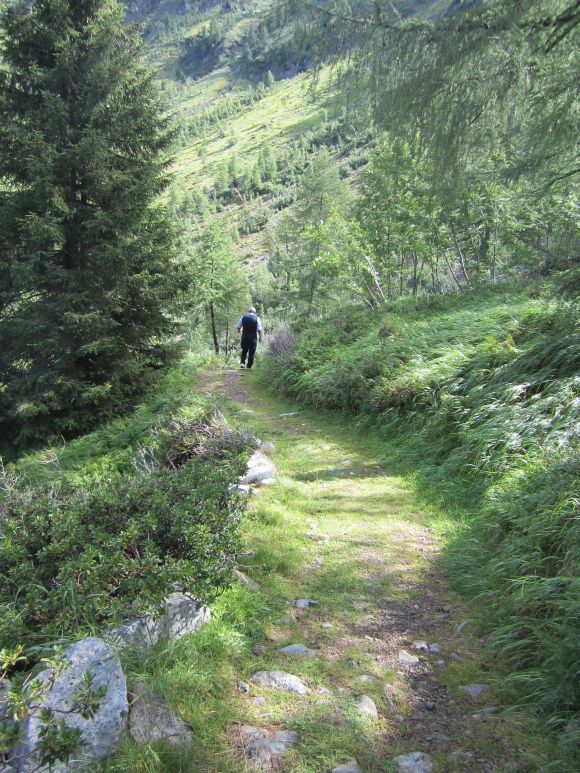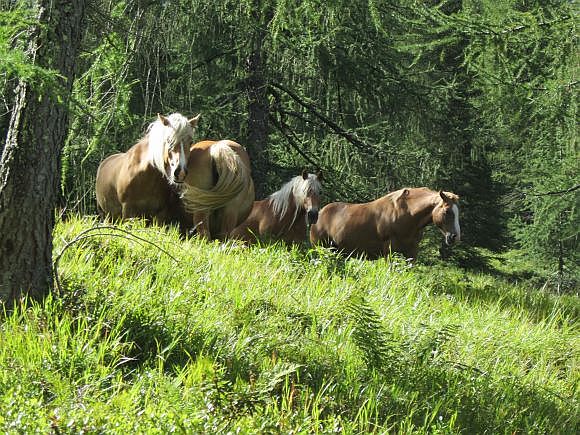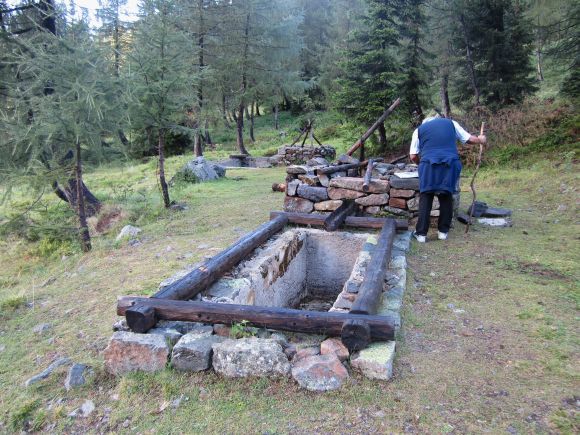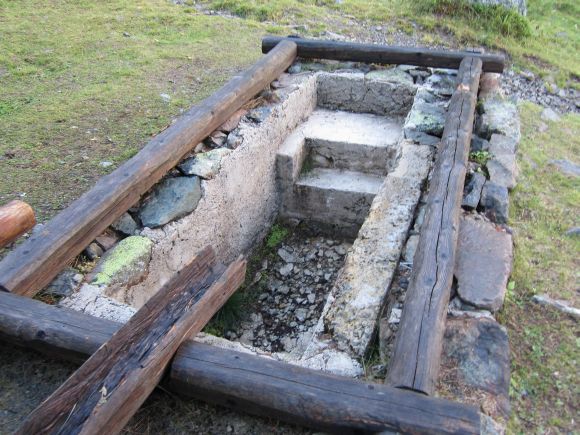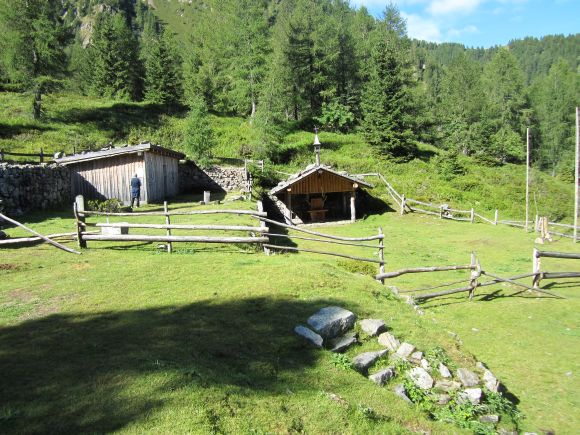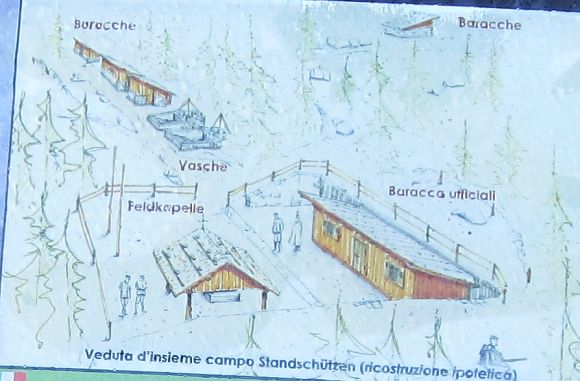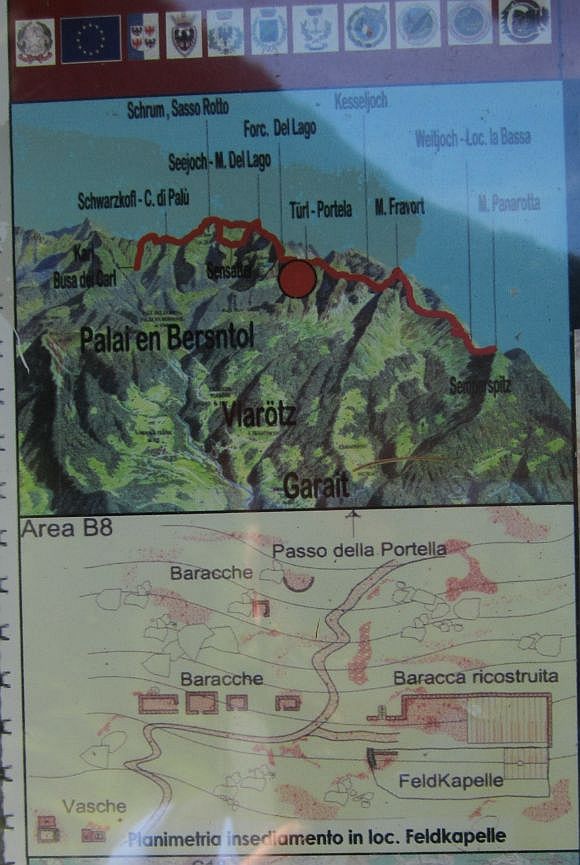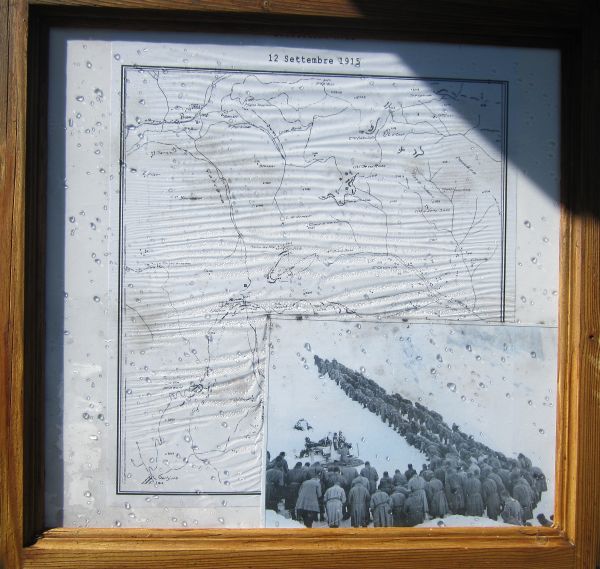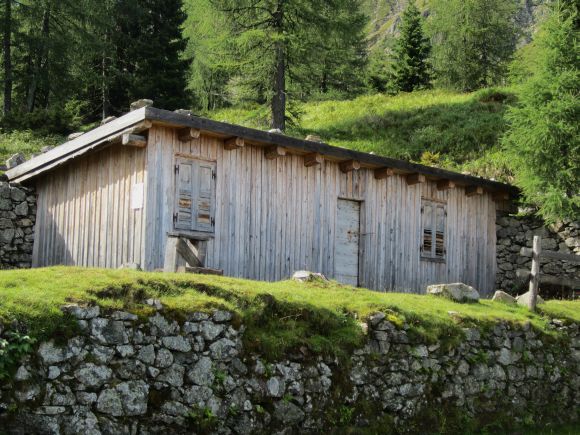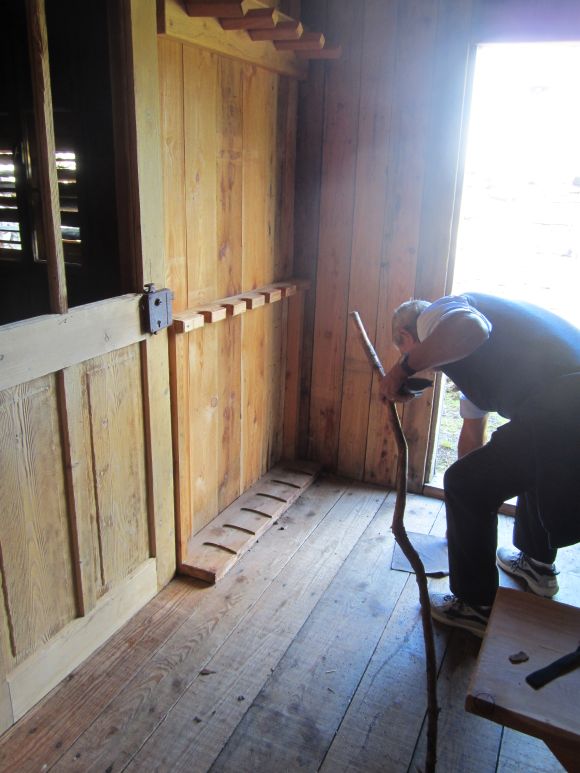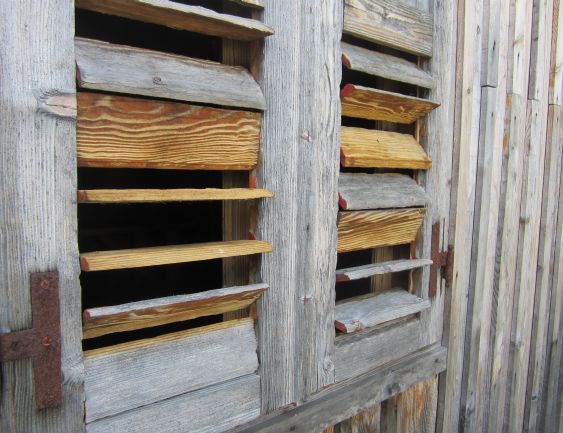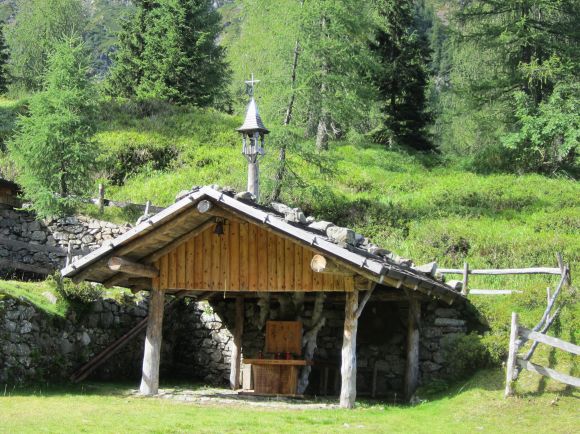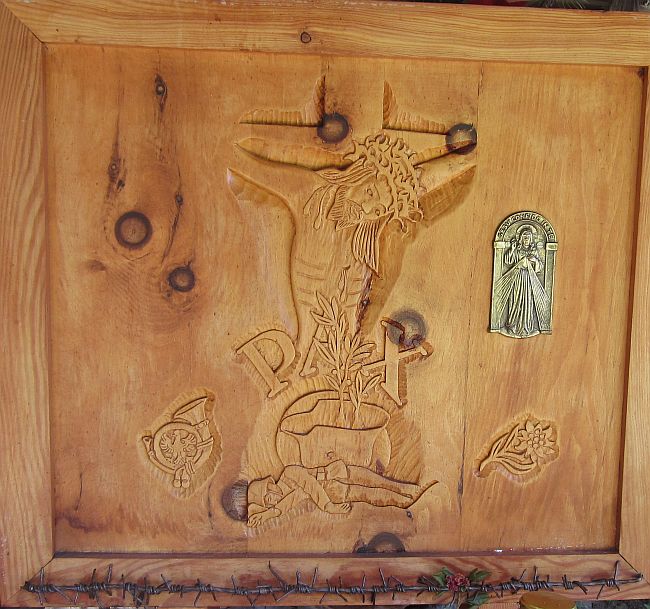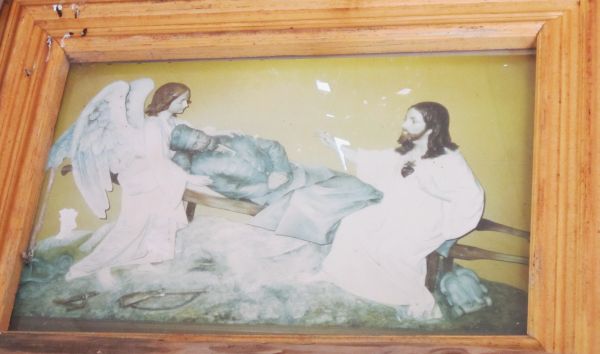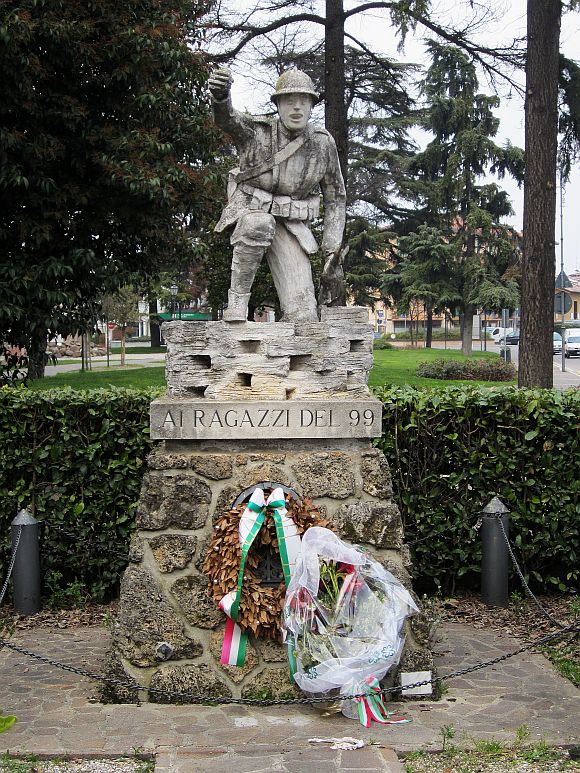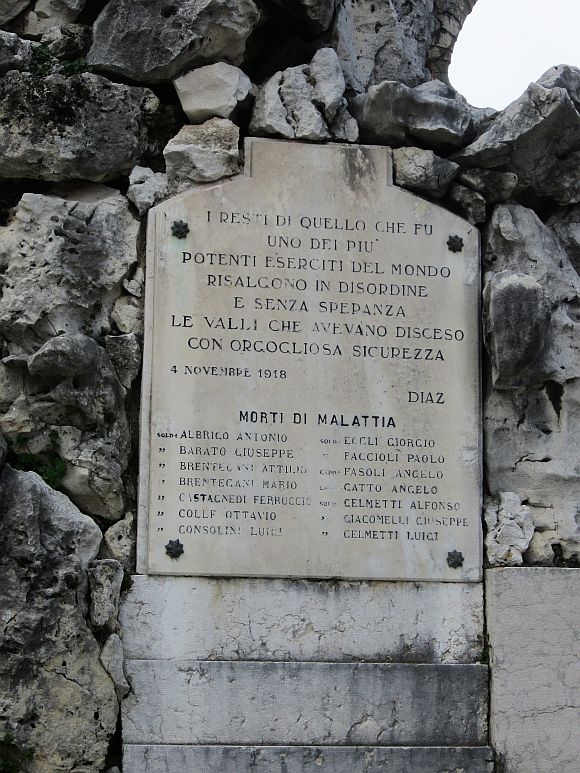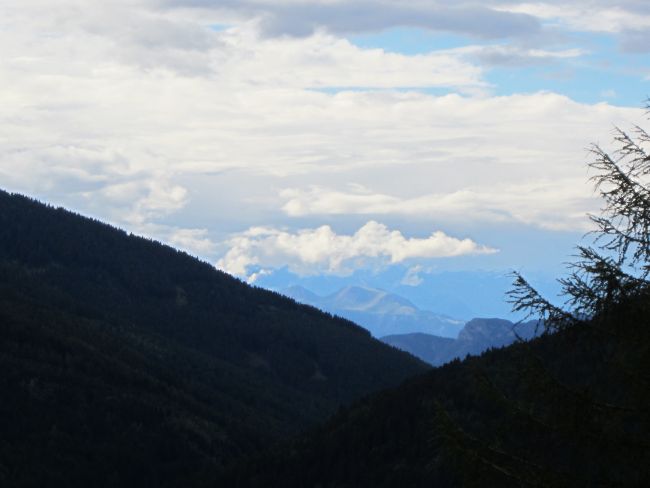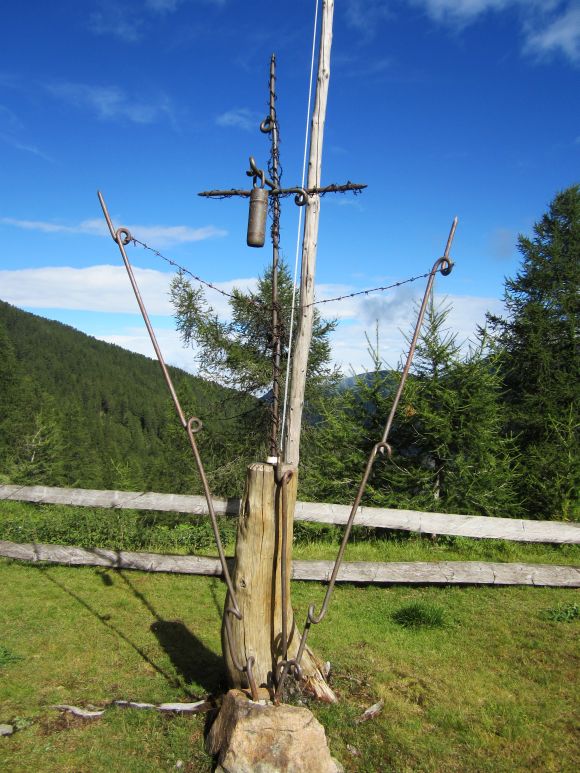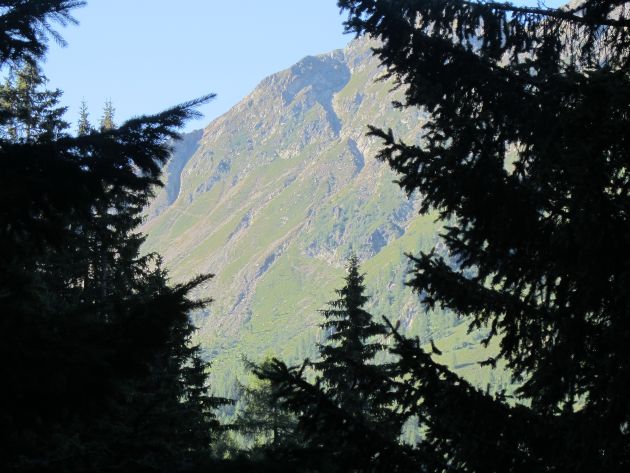
When I was a sprite, we observed November 11 as “Armistice Day.” At some point which I am not going to pause to identify — perhaps it was when the last veteran of the First World War passed on — this occasion was recast as “Veterans’ Day.”
Something similar occurred in Italy, at some point I’m not going to identify; November 4, the date on which the Austrian surrender took effect, is now labeled “Armed Forces Day.”
Call it what you will, here the memory of the hideous calamity of “The First War” or “The War of ’15-’18,” as they also name it here, has not faded. On or near every parish church in Venice you will find a plaque listing the names of the local boys who never returned (names of the fallen of the Second War have also been added).
On the base of the flagpole in Campo Santa Margherita the names of two of Lino’s uncles are inscribed, last name first, the way they do it here: GREGOR ANGELO GREGOR FRANCESCO. When Lino and his twin brother arrived in 1938, his mother named them for her deceased brothers. So I suppose I’m also linked in a way to the Great War.
For those whose interest tends more toward the logistical, many organizations have labored to reconstruct or recover whatever remains along the battle front of the Alpine crest — ruined barracks, partially collapsed trenches, snarls of rusty barbed wire, assorted unexploded bombs, and similar bellicose elements left by men who fought because they were ordered to do so and died because that’s what’s likely to happen in a war, not to mention during an entire winter near the screaming tops of naked mountains: Avalanches, frostbite, disease, not to mention falling chunks of mountain dislodged by the mutual detonation of mines.
Speaking of elements which were left behind, sometimes one of the men himself reappears, revealed by a melting glacier or shifting rockslide. Just think, corpses of forgotten Austrian and Italian soldiers still strewn about those picturesque Alps.

Last August we spent a few days in the Valle dei Mocheni, our favorite valley not far from Trento. Before the War, this area belonged to the Austrian-Hungarian Empire, so when the first shots rang out, Austrian troops were sent into the high valleys to repulse the Italians.
We went further up into a side valley called the Valcava, and passed a sparkling morning walking even further up to the “FeldKapelle,” a reconstructed field chapel at 6,049 feet (1,844 meters) in an area which had been an outpost of the Austrian Kaiserjager and Standschutzen, Austrian infantry corps reorganized as mountain troops to combat the Italian Alpini, the oldest active mountain infantry in the world.
What I love about this place — apart from the fact that it ever existed, which I hate — is that it was repaired by the Alpini of the nearby village of Fierozzo, with the collaboration of the neighboring villages of Palu’ del Fersina and Frassilongo. They made it their project, with the help of archaeological advisers and historians, to restore the chapel and some small nearby structures. You might have thought it would have been the Austrians who’d want to remember their comrades, but here it appears that the Italians wanted to remember their enemies.

As for the denouement of four years of slaughter, here is the succinct report from Wikipedia:
By October 1918, Italy finally had enough soldiers to mount an offensive. The attack targeted Vittorio Veneto, across the Piave. The Italian Army broke through a gap near Sacile and poured in reinforcements that crushed the Austrian defensive line. On 3 November, 300,000 Austrian soldiers surrendered.
The Battle of Vittorio Veneto heralded the dissolution of the Austro-Hungarian Army as an effective fighting force, and also triggered the disintegration of Austria-Hungary.
On October 29, the imperial authorities asked Italy for an armistice, but the Italians continued to advance, reaching Trento, Udine, and Trieste.
On 3 November, Austria-Hungary sent a flag of truce to the Italian Commander to ask again for an armistice and terms of peace. The terms were arranged by telegraph with the Allied Authorities in Paris, communicated to the Austrian Commander, and were accepted.
The Armistice with Austria was signed in the Villa Giusti, near Padua, on 3 November, and took effect on 4 November, at three o’clock in the afternoon.
Peace at last.
Then they all got busy with the paperwork. It wasn’t pretty either. Field-Marshal Earl Wavell said of the Paris Peace Conference: “After the ‘war to end war’, they seem to have been in Paris making the ‘Peace to end Peace.'”
So let’s not look back, let’s face forward. Take tomorrow, November 5: Some notable events that occurred on this day were: The Gunpowder Plot (1605); Italy annexes Tripoli and Cyrenaica (1911); Bulgarian troops in Constantinople blockade drinking water (1912); Britain annexes Cyprus (1914); Britain and France land forces in Egypt (1956). There actually is no end to it all.
So I’m going to go back to thinking about the Mass of commemoration held each year at the FeldKapelle. This year the priests officiating were don Daniele Laghi and don Hans Norbert Slomp. Why can’t it always be like this? I mean, without millions of people having to die first.
